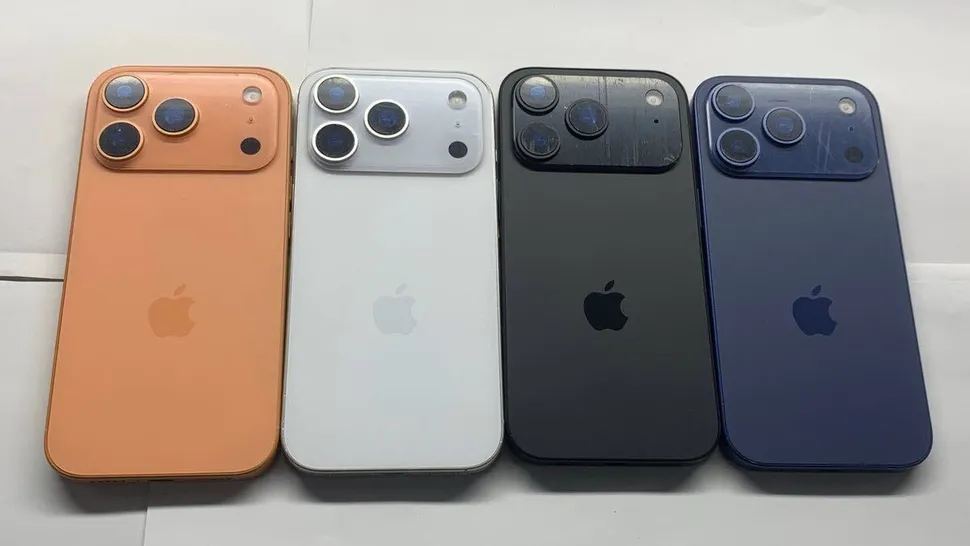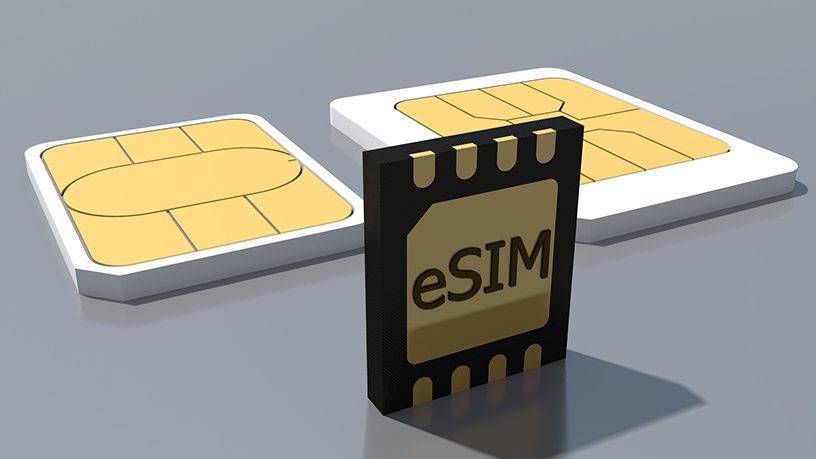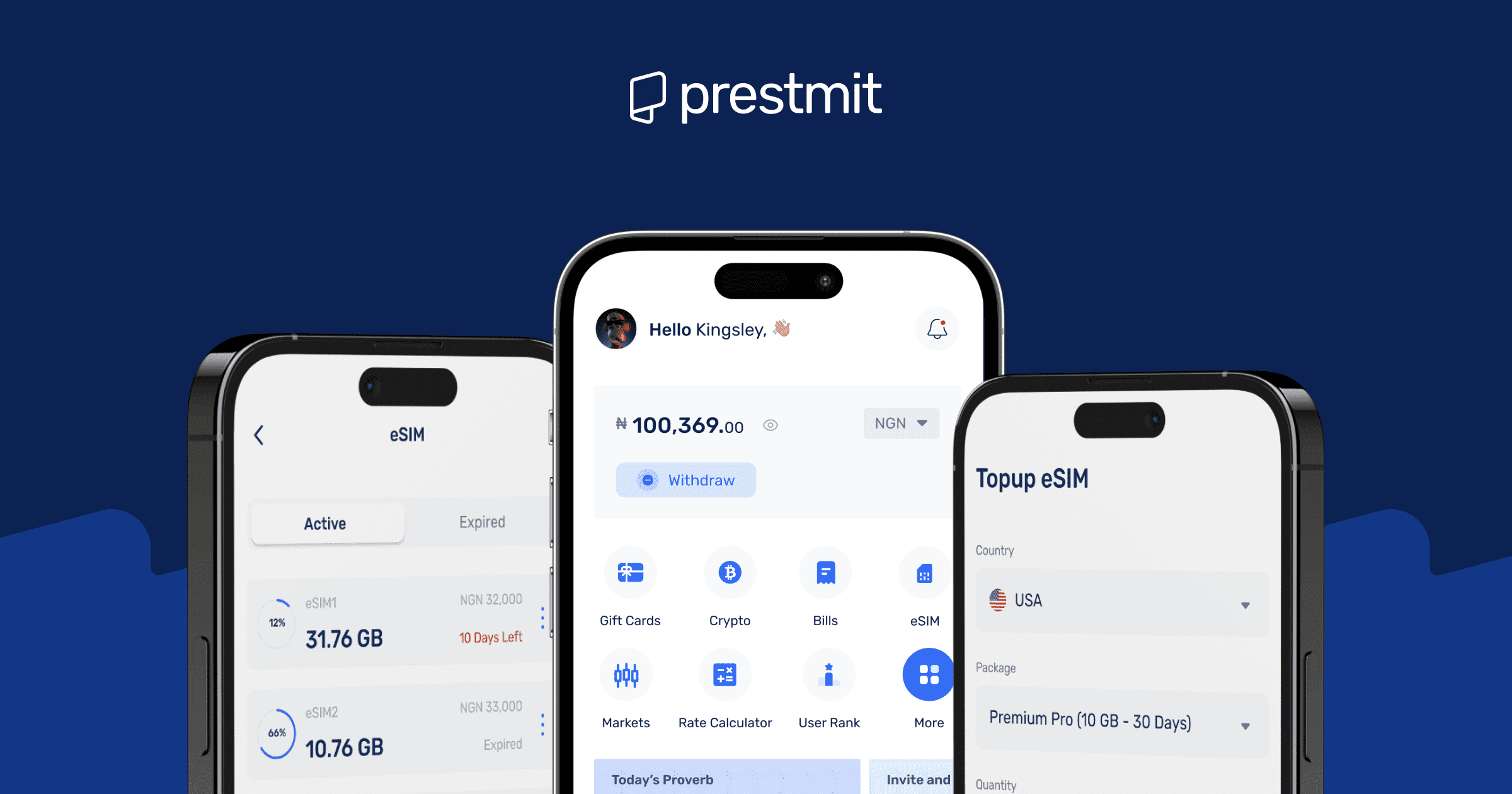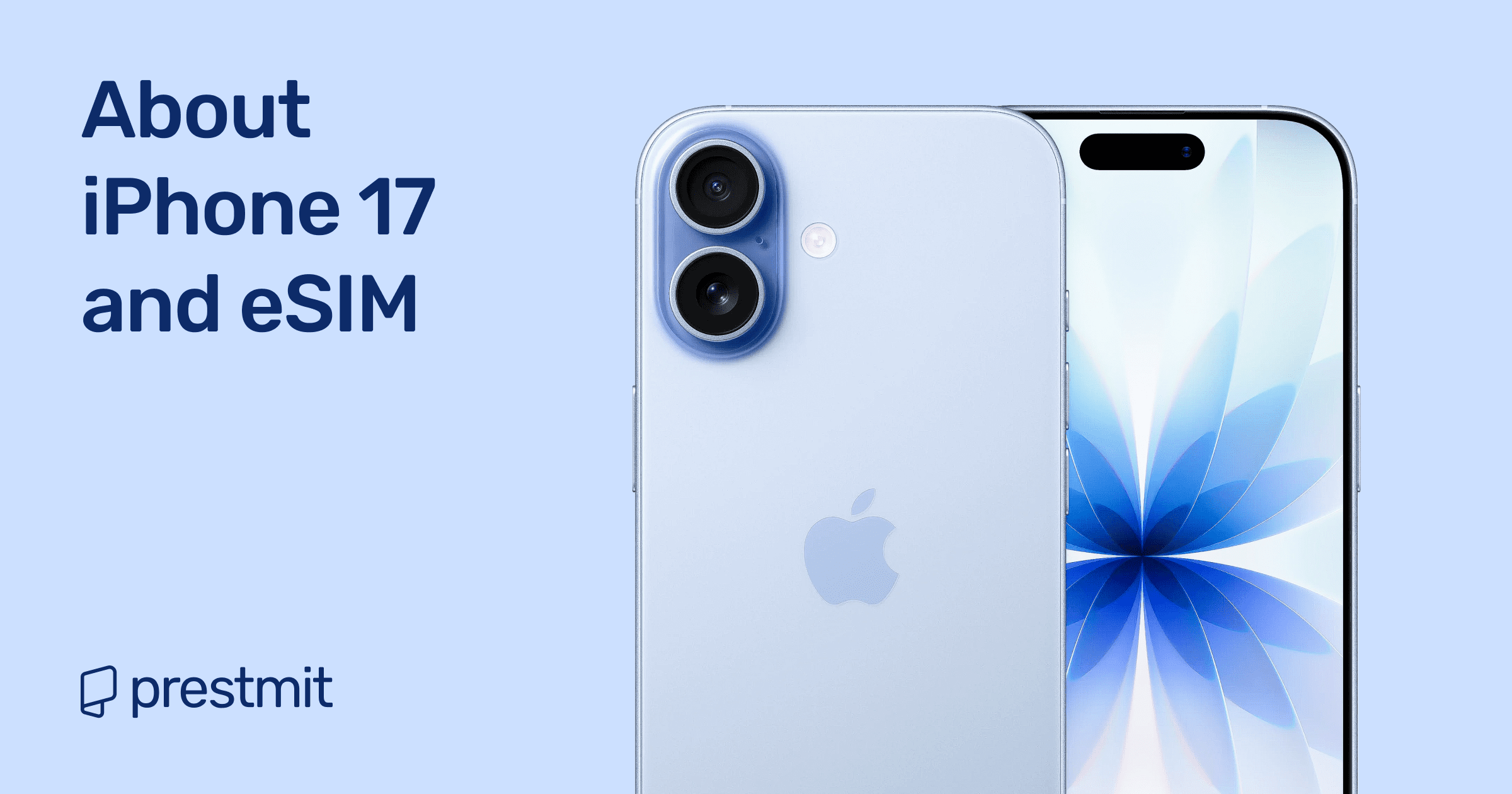Table of Contents
Traveling around the world without connectivity issues just got a whole lot easier with the launch of the new iPhone 17 series. Apple is doubling down on eSIM technology that makes connectivity seamless, moving away from physical SIM cards and embracing a fully digital approach.
According to Apple, this upgrade eliminates one of the biggest pain points of travelers who have grown tired of swapping tiny SIM cards at airport Kiosks or dealing with unpredictable roaming charges. That means that business travelers can stay reachable on multiple numbers, vacationers can grab local data plans instantly and digital nomads can manage connectivity across countries with ease. How is this possible?
In the sections ahead, we will explore Apple’s eSIM strategy with the new iPhone 17 series, why it matters for travelers, and how to get the most out of this feature. Whether you are planning a short trip or managing life across continents, this will help you understand everything about eSIM on iPhone 17 to ensure you stay connected wherever your journey takes you.
iPhone 17 and Apple’s eSIM Strategy

Apple’s move toward eSIM technology has been years in the making. This started with the iPhone XS in 2018 which introduced eSIM alongside the traditional SIM tray. By the time the iPhone 14 launched in the United States, Apple had taken bolder steps by removing the physical SIM slot entirely. The new iPhone launches are built on this transition further solidifying Apple’s long-term plan to replace plastic SIM cards with a fully digital system.
The iPhone 17 series fits squarely into this strategy as one of Apple’s most eSIM-focused devices yet. Apple has made eSIM the default in 12 countries.
The standard iPhone 17, iPhone 17 Pro, and iPhone 17 Pro Max all ship without a physical SIM slot in these regions. This reinforces Apple’s confidence that users and carriers are ready for the switch. Taking it a step further, the new iPhone Air is eSIM only worldwide making it the first Apple device to eliminate physical SIM support across all markets.
By making eSIM central to the iPhone 17 series, Apple is also accelerating global adoption. More carriers are now prioritizing eSIM support, knowing that Apple’s influence can shape industry standards. For travelers, this means faster access to local plans, easier carrier switching, and a glimpse into a future where digital connectivity fully replaces the traditional SIM card.
Why Should Travelers Care About eSIM on iPhone 17?
The iPhone 17 brings a new level of convenience for frequent flyers, business professionals, and tourists. People no longer need to rely on physical SIM cards to stay connected abroad. Instead, they can set up local data plans directly on their device, keeping their primary number active while adding temporary lines for travel. This flexibility ensures they are always reachable for business calls, personal messages, or data on the go.
Another advantage is the elimination of the airport SIM card scramble. Traditionally, international travelers would waste precious time searching for vendors or kiosks immediately after landing but with iPhone 17, that process is gone. You can activate a local plan within minutes through an app or QR code. This makes it possible to get online as soon as you arrive, no waiting, no physical cards, and no risk of losing a tiny SIM.
Equally important is the ability to switch networks seamlessly while moving between countries. iPhone 17 can store multiple eSIM profiles making it easier to jump from one carrier to another without restrictions. This not only helps reduce roaming costs but they transforms how connectivity works.
Advantages of eSIM for iPhone 17 Travelers

Here are the key benefits that make eSIM on the new iPhone 17 essential for a seamless travel experience.
1. Instant Connectivity
One of the biggest frustrations for international travelers has always been staying connected when they arrive. With iPhone 17’s eSIM that hassle disappears. Travelers can activate a mobile plan within minutes directly from their phone without visiting a SIM vendor at the airport or struggling with language barriers to buy a local card.
2. Multiple Plans on one device
iPhone 17 also supports multiple eSIM profiles. You can store and switch between several carriers on a single device. This is particularly valuable for people who travel across different countries in one trip or those who want to maintain both a work and personal number. With just a few taps, you can swap between plans depending on your location to ensure you always have the best coverage.
3. Cost Savings on Roaming
Roaming charges have long been a hidden cost of international travel. eSIM technology on the iPhone 17 gives travelers a way around this problem. By accessing local or global data plans directly, you can avoid inflated roaming fees and choose the most affordable options available on the eSIM platform.
4. Security
Physical SIM cards can be lost, cloned, or swapped leaving travelers exposed to fraud and identity theft. With eSIM on the iPhone 17, that risk is significantly reduced. The SIM information is embedded digitally inside the device, it cannot be removed or tampered with in the same way. This makes it harder for criminals to perform SIM swap attacks and gives travelers more peace of mind when using mobile banking, authentication apps, and sensitive communications abroad.
5. Space Efficiency
Apple’s decision to eliminate the physical SIM tray in many iPhone 17 models also has design advantages. The freed up space is used to improve internal components particularly battery capacity and performance. This means longer usage time between charges and a device optimized for heavy use. In short, eSIM not only simplifies connectivity but also contributes to a better-performing iPhone overall.
6. Easy Top-ups and Renewals
Most eSIM providers allow digital top-up of data directly through the platform’s app. Travelers don’t need to search for physical recharge cards or local stores to use data or connect online. They can add more data or extend the validity instantly on their phone.
How to Set Up an eSIM on iPhone 17
Setting up an eSIM on the iPhone 17 is way easier for travelers who want instant connectivity without dealing with physical SIM cards. Below is a simple step-by-step guide to get your eSIM activated online quickly;
- Open settings on your iPhone 17 and click Cellular.
- Tap Add eSIM
- Scan your carrier-provided QR code or other instructions provided by the platform.
- Enter details manually if required (Address and activation code
- Assign a label to each eSIM (e.g “Home” “Travel”)
- Set your default line for calls, messages, and data
- Switch between multiple eSIMs as needed.
If activation fails, restart your device and try scanning the QR code again, or contact your carrier to confirm that eSIM support is active on your account.
Best eSIM Provider for Travelers Using iPhone 17 — Prestmit
Prestmit is a leading eSIM provider for millions of happy users worldwide. Its platform is designed for speed, simplicity, and reliability making it ideal for anyone who needs instant connectivity abroad. Whether you are a business traveler, tourist, or digital nomad, Prestmit offers plans that are easy to activate and manage directly from your iPhone 17.
Prepaid provides cost-effective options for both short trips and extended travel to help users avoid high roaming fees. The platform also makes it possible to activate eSIM in minutes via the app and if there is any activation issue, Prestmit offers responsive customer service that will guide you through activation or troubleshooting whenever needed.
And with Prestmit, travelers can enjoy seamless connectivity on the iPhone 17 without worrying about roaming fees, lost SIMs, or complicated setup processes. It is a practical solution for staying online anywhere in the world.
How to Buy an eSIM for iPhone 17 on Prestmit

The following are the quick steps to buy an eSIM:
- Go to the official Prestmit website or download the Prestmit App on Google Play Store or Apple Store.
- Create a Prestmit account and log in.
- Choose the country where you want to purchase the eSIM data plan.
- You can check through the options to select your preferred data plan that best suits your needs.
- Follow the prompts to make payment for your eSIM plan.
- You will access your eSIM plan immediately after payment is confirmed.
- Activate your eSIM and start enjoying your mobile data.
Frequently Asked Questions (FAQs) About iPhone 17 and eSIM Technology
Can I use two eSIMs on iPhone 17?
Yes, iPhone 17 supports multiple eSIM profiles. This allows you to have two or more active lines simultaneously. You can also manage which line is used for calls, messages, and data.
Which countries support eSIM for iPhone 17?
iPhone 17 is eSIM only in 12 selected countries including the United States, Canada, and several European nations. Other regions may still offer hybrid support. The iPhone Air model is eSIM only worldwide.
Can I transfer my eSIM from iPhone 16 to iPhone 17?
Yes, most carriers allow eSIM transfer between devices. You may need to scan a new QR code or use your carrier’s app to complete the transfer.
Do I need Wifi to activate an eSIM on iPhone 17?
Yes. Initial activation requires an internet connection, either through WiFi or another mobile network to download the eSIM profile.
How much do travel eSIM plans cost for the iPhone 17?
Cost may vary by provider and region. Typically short-term plans range from $3 to $15 per GB while unlimited plans or multi-country passes may cost more. Using providers like Prestmit can help find affordable options.
Conclusion
Apple’s move to eSIM-only devices with the iPhone 17 is more than a technological upgrade but a practical solution for modern travelers. Apple has made it easier than ever to manage multiple numbers, switch between local networks, and avoid high roaming fees that come with physical SIMs. For anyone moving across borders this digital approach removes the traditional frustration of connectivity and gives users more control over their mobile experience.
In essence, this solution-focused combination transforms travel from a connectivity challenge into a smooth, uninterrupted experience to empower users to focus on their journey knowing that staying actively connected is just as important to the travel experience as the destinations.

